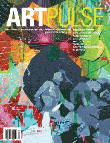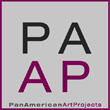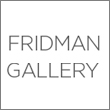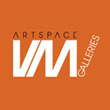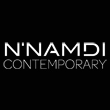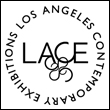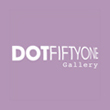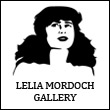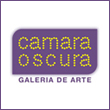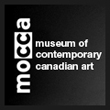« Reviews
Singapore Biennale
By Victoria Lynn
Entitled “Open House,” the Singapore Biennale 2011 included 161 works by 63 artists from 30 countries. The exhibition revolved around notions of welcome and the artistic process. Building on earlier incarnations of ‘home’ that were explored in several international exhibitions during the 1990s, the Biennale considered interaction as a key leitmotif of our times: transactional exchanges, travel, flows of materials, the exchange of ideas, the city as a site of such exchanges, labor, arrival and departure. In formulating the ideas for this third Biennale, the Artistic Director Mathew Ngui and curators Trevor Smith and Russell Storer, responded to Singapore’s immigrant society, one that thrives on customary celebrations, trade and transit.
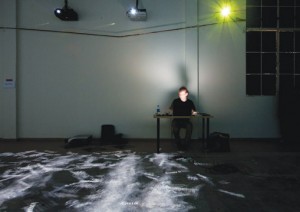
Charles Sandison, Through a Glass Darkly, 2011, computer-generated data projection Commissioned by the Singapore Biennale 2011. Courtesy Charles Sandison. Photo: Singapore Art Museum.
The Singapore Art Museum and its associated space, SAM at 8Q, included several works that focused on the ways in which we accumulate images, goods and collections in the form of an archive. Malaysian artist Shooshie Sulaiman recreated a house she once lived in, and a shop she occupied, by creating two large rooms of whitewashed weatherboard walls. A collector of memories, images and ideas, Sulaiman included works from several years, including portrait drawings, collages, and photographs. At times she scratches into a white surface painted over these images, as if to explore a continuum between that which has been lost, and the impulse to renew. Australian artist Stuart Ringholt also created an archive in the form of display cases with numerous copies of art magazines that have been altered by the artist. Replacing one image with another-often in subtle ways-Ringholt pays homage to surrealist antecedents while also discovering connections between unrelated issues of Artforum. One sequence focused on advertisements for artists who use an ethereal light source in their work. In an adjoining room, Ringholt’s strewn sculptural objects comprised everyday materials, such as soft drink cans, plastic chairs, and cigarette packets-items that, by contrast, we never archive or preserve. The impulse to collect also featured in the work of Malaysian artist Roslisham Ismail, aka Ise’s circle of fridges. Each fridge was filled with a different array of goods, and visitors were invited to open them. More than simply a social experiment, the work raised issues to do with the history of Pop art, collection, collaboration, wealth, and sustenance. Matt Mullican’s drawings and images of carpets, family photographs, gardens and phrases chronicled subjective experience in the form of memory flashes.
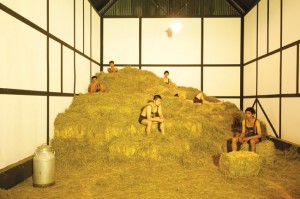
Elmgreen & Dragset, Deutsche Scheune / German Barn, 2011, steel, plywood, concrete, hay, taxidermied goat, tyre, tools, farming tools, antlers and performers with typical German styled farmers costumes, 26.24’ x 22.96’ x 45.9’. Courtesy Elmgreen & Dragset.
The National Museum of Art featured works about notions of urban exchange. In the central space, a maze of sheer silk by Shao Yinong and Muchen featured large-scale embroideries of defunct banknotes. Banknotes have appeared in the work of several artists in the past, such as Carlos Garaicoa and Fiona Hall. The magnification and detail of these heraldic and commemorative images was exceptional, drawing attention to the principle that money is not simply a means of exchange, but also an object of desire. Superflex’s video of a McDonald’s store slowly flooding was also an observation about commerce, albeit one that shows economic precarity in the face of natural disaster. Singapore is of course surrounded by water-a complex set of routes for trade, travel and exile. Tiffany Chung presented work in the context of increased flooding of the Mekong Delta, Vietnam. In response to climate change and poverty, Chung’s work proposes a new kind of sustainable living in the form of a town that floats on water. Fifty small boats and 43 houseboats with solar panels and rainwater collectors were intimately placed on top of a cluster of suspended Perspex panels.
Old Kallang Airport was the largest venue, and included several works that considered transit and traffic. Closed in the 1930s, this group of three large colonial buildings was renovated for the Biennale by the Spanish architect Marcos Corrales. Indian artist Sheela Gowda successfully recreated her 2009 Venice Biennale work, Behold consisting of 4,000 meters of tangled human hair variously draped over suspended and gleaming bumper bars. The reference is to the South Indian superstition that a woven strand of hair on a bumper bar will ward off accidents. Finnish artist Charles Sandison created an impressive large-scale projection of words from the four languages of Singapore. Inspired by the conversations he heard on public transport, the work contained a live generation of streams of text that travelled in rivulets across the floors and walls. Kyungah Ham from South Korea smuggled photographic images of war, death, landscape, and consumerism across the border with North Korea to villagers who then interpreted the photographs in embroidery, mixing the metaphors and creating new relationships between global culture and expressions of remorse. Taryn Simon’s (USA) photographs presented items that were confiscated from passengers embarking on international travel. CONTRABAND looks at the secret traffic of objects that are only rendered dangerous by the fact of their transition.
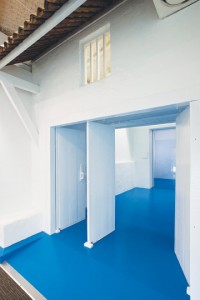
Shooshie Sulaiman, Rumah Sulaiman Belakang Kedai Ah Guat(House of Sulaiman Behind Ah Guat's Shop), 2011, mixed media (site specific installation), dimensions variable. Commissioned by the Singapore Biennale 2011. Courtesy Shooshie Sulaiman. Photo: Singapore Art Museum.
Phil Collins’ (UK) short film, the meaning of style, focused on the theme of translation, in particular the transition of skinhead appearance from its source in northern England to Malaysia. Accompanied by an emotionally riveting soundtrack, the film captures the dreams, contradictions, and restrictions experienced by these youths in various contexts-at a traditional wedding, in front of images of Buddha, on the street, and in a nightclub. The sense of dislocation in Phil Collins’ film was echoed in the work of Singaporean artist Ming Wong. A remake of Pasolini’s Teorema in five simultaneous parts, the artist assumes the role of all the characters, often in drag. In Pasolini’s film, a stranger has a love affair with several members of the same family and changes their lives forever. Ming Wong alters the locations and circumstances, and ultimately reveals himself as a trickster, both in and out of character.
The archival and research-based practices were the most successful works in this exhibition because they integrated artistic process, aesthetic experimentation, and socio-political realities. By contrast, the conceptual/minimalist artists, such as Ceal Floyer, Martin Creed, and Mike Nelson, seemed out of place in such a richly referential terrain. Furthermore, the relational exercises in social exchange, such as Arin Rungjang’s social sculpture that invited Thai migrant workers to visit and swap their furniture, or Martha Rossler’s community garden, were less convincing. Two amusing ‘open houses’ bookended the exhibition: Japanese artist Tatzu Nishi’s The Merlion Hotel, a room wrapped around Singapore’s iconic Lion statue at Marina Bay and the life-size farmhouse located in an aircraft hanger by Elmgreen and Dragset, complete with young men in lederhosen lying on hay bales. Sexually charged, these ‘houses’ were however strangely hollow, as if beckoning for the interaction and activity evident in many other works.
(March 13 - May 15, 2011)
Victoria Lynn is the Visual Arts Curator for the forthcoming Adelaide Festival 2012 and is an independent writer and curator based in Melbourne, Australia.
Filed Under: Reviews

